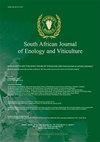膨润土精制对霞多丽和长相思葡萄酒蛋白质和酚类成分的影响
IF 1.1
4区 农林科学
Q4 FOOD SCIENCE & TECHNOLOGY
引用次数: 8
摘要
膨润土精制被广泛用于在装瓶前去除白葡萄酒中多余的蛋白质,以防止蛋白质雾霾的形成。然而,膨润土精制也可以去除葡萄酒中有益的化合物,例如有助于葡萄酒感官特性的酚类化合物。在本研究中,研究了膨润土精制对霞多丽和长相思葡萄酒酚类成分的影响,采用四种不同的膨润土:膨润土(PCT, Ca);膨润土(BTL,钠钙膨润土);膨润土(PBN, Na);实验用(SPM, Ca-Na膨润土)。不同膨润土对雾相关蛋白的去除效果相似,总酚浓度显著降低。对酚醛成分的影响取决于膨润土的类型。在本研究中,用Ca-Na膨润土(SPM)精制后的果子酸和黄烷醇浓度最低,尤其是表儿茶素没食子酸酯、没食子儿茶素、儿茶素和表儿茶素,这可能导致所得葡萄酒的口感降低。本研究的结果为酿酒师选择合适的膨润土去除蛋白质提供了额外的信息,同时对酚类化合物的还原效果最小。本文章由计算机程序翻译,如有差异,请以英文原文为准。
Effect of Bentonite Fining on Proteins and Phenolic Composition of Chardonnay and Sauvignon Blanc Wines
Bentonite fining is widely used to remove excess proteins in white wine prior to bottling in order to prevent protein haze formation. However, bentonite fining could also remove beneficial compounds in wine, e.g. phenolic compounds that contribute to sensory properties of wine. In this study, impact of bentonite fining on the phenolic composition of Chardonnay and Sauvignon Blanc wines has been investigated using four different bentonites: pluxcompact (PCT, Ca bentonite); bentolit (BTL, Na-Ca bentonite); pluxbenton (PBN, Na bentonite); and sperimentale (SPM, Ca-Na bentonite). Different bentonites showed similar efficiencies in removing haze-related proteins and resulted in significant decrease in total phenolic concentration. Impact on phenolic composition varied depending on the type of bentonite. In this study, fining with Ca-Na bentonite (SPM) resulted in the lowest concentrations of caftaric acid and flavanols, particularly epicatechin gallate, gallocatechin, catechin and epicatechin, which could lead to reduced mouthfeel of the resultant wine. Results presented in this study provided additional information for winemakers to choose appropriate bentonite to remove proteins with a minimal effect on reduction of phenolic compounds.
求助全文
通过发布文献求助,成功后即可免费获取论文全文。
去求助
来源期刊
CiteScore
2.50
自引率
7.70%
发文量
1
审稿时长
>36 weeks
期刊介绍:
The South African Journal of Enology and Viticulture (SAJEV) publishes full-length original Research Papers, Research Notes and Review Papers on all subjects related to enology and viticulture. The SAJEV does not accept articles published in, or submitted to, other journals.

 求助内容:
求助内容: 应助结果提醒方式:
应助结果提醒方式:


